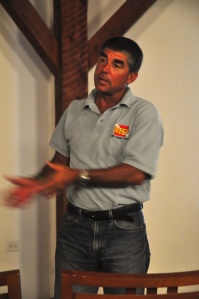“Two Classes in the Day of an Island School Student”
Wednesday, October 6, 2010
By Caciques Heather Seeley and CJ Easton
Today at the Island School my Marine Ecology class performed our Naturalist dive at tunnel rock. The reason it is a naturalist dive is because this is one of the roles one must fulfill to be granted advanced open water scuba diving certification. So for our naturalist dive my marine ecology class went to Deal’s Point. I was boat captain of the boat the Mary Alice, which means that I was in charge of operating the boat and maintaining safety of the passengers throughout our journey. The the passengers of the Mary Alice were Continue reading


